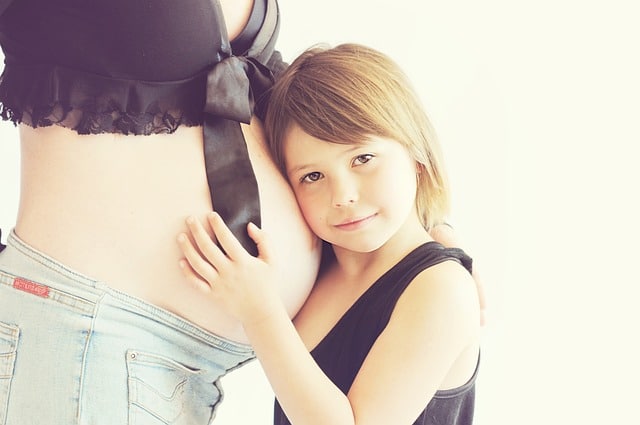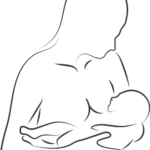Image credit to Ask Dr Sears
Know About Pregnancy With Mono-Mono Twins MoMo or mono-mono twins are identical twins developing in a single amniotic sac and sharing a placenta. “MoMo” and “mono-mono” refer to shortened terms for “monoamniotic-monochorionic,” meaning a single chorion (the outer membrane around an embryo) and a single amniotic sac. That is, it is the bag of waters that contain(s) the fetuses. This type of twinning is very rare and has some increased risks. Here’s what to know about pregnancy with mono-mono twins.
How Mono-Mono Twins Form
Monozygotic twins come from the division of one egg-sperm combination, the identical twin. This occurs when separation is a bit delayed, generally a week or so post-conception. By then, all the processes associated with growing a placenta, a chorion, and an amniotic sac would already be in action. Now, two embryos will develop within a single, shared sac to become mono-mono twins.
Most monozygotic twins develop with separate sacs, or occasionally with separate amnions within a shared chorion; medical professionals describe this as monochorionic-diamniotic or “MoDi.” Only about 1% of twin pregnancies are monoamniotic; even fewer are monoamniotic-monochorionic.
Diagnosis of Mono-Mono Twins
Most twin pregnancies are followed routinely with ultrasound. The doctors examine for the existence of a dividing membrane that confirms there are two fetuses lying in separate sacs. The lack of visibility of the membrane or the existence of a thin or vague line is an indication for further scrutiny in confirmation. Ultrasound is the only way to detect mono-mono twins.
The membrane separating mono-mono twins is so thin in the early weeks of pregnancy, often nonexistent, that ultrasound can hardly detect it. Doctors frequently do not make the correct diagnosis of monochorionic-diamniotic twins until a later ultrasound shows some sort of dividing membrane.
Risks of Mono-Mono Twin Pregnancies
People carrying mono-mono twins should seek the help of a doctor who has experience with mono-mono twins. Ideally, a perinatologist, who is an obstetrician specializing in high-risk pregnancy, should routinely follow people carrying mono-mono twins. Monoamniotic-monochorionic twins are at risk for many potential health problems throughout pregnancy and their survival rate is 70%.
Umbilical cord problems
The mono-mono twins, however, share a single placenta in the uterus and are attached through their own umbilical cords that feed blood—hence, nutrients—into them. When these twin babies swim around in the same amniotic sac, their umbilical cords cross or press on one another, thus cutting off these vital lifelines.
This can be a life-threatening situation. The longer the cords are tangled or compressed, the higher the risk of damage to the cords—and the higher the risk of death for one or both babies.
Twin-to-twin transfusion syndrome
Mono-mono twins are at risk for twin-to-twin transfusion syndrome, a condition in which one twin—the donor—essentially provides a blood transfusion to another twin—the recipient. In most cases, the recipient twin gets most of the nourishment, while the donor twin is undernourished, smaller, and often anemic.
A doctor can diagnose TS in a set of twins who don’t share a sac by examining the fluid levels in their amniotic sacs. Because mono-mono twins have only one sac, this greatly complicates diagnosing TTTS. Comparing the physical development of both of the twins is the only way to diagnose this condition in mono-mono twins prior to birth.
Also Read : Arching in Babies
Abnormal amniotic fluid levels
Oligohydramnios, or low amounts of amniotic fluid, and polyhydramnios, or excess fluid, can both influence mono-mono twins.
A low blood supply in one of the twins will result in insufficient amniotic fluid. The insufficiency of fluid thus restricts movement, bladder size, and overall fetal growth apart from reducing the cushion from compression of the umbilical cord in the uterus. On the contrary, the excess blood supply than usual will result in too much amniotic fluid that will elongate the bladder and eventually cause heart failure.
Twin reversed arterial perfusion sequence
There is a greater risk of twin reversed arterial perfusion sequences with monochorionic twins. In this condition, one twin’s heart, and at times other parts of the body too, fails to develop, and the other twin’s heart works for both babies.
The twin with no heart cannot survive, while the other twin dies due to heart failure because of the hard work that its heart does. Treatment involves either early delivery or interrupting the blood supply between the twins so that the healthier twin has a greater chance of survival.
Low birth weight
It is independently connected to low birth weight reduced odds of survival, and increased risk for disabilities and health problems in life. Mono-mono twins have four times the risk of low birth weight compared to pregnancies in which each fetus has a placenta of its own.
Weight inequality can also be of concern with mono-mono twins, as it may result in growth restrictions in the uterus itself. This is known as intrauterine growth restriction or IUGR.
Growth restriction due to premature birth
At 24 weeks, mono-mono twins have a survival rate of about 75% to 80%. Most mono-mono twins start developing life-threatening complications around 26 weeks that end up in spontaneous preterm delivery or a more urgent than expected C-section. Preterm delivery predisposes one to various other serious life conditions.
Monitoring and Treatment of Mono-Mono Twins
Fortunately, due to advancements in technology, doctors can now monitor the baby during pregnancy. High-resolution ultrasounds, Doppler imaging, and non-stress tests can give an idea about symptoms and problems with the cord in the case of mono-mono twins.
Cord entanglement and constriction tend to develop over a period, giving most expecting parents and prenatal health care providers enough time to make decisions. Some cases may necessitate close monitoring of the pregnancy in the hospital. Sometimes doctors administer steroids to improve the lung development of babies in order to increase their chances of survival outside the uterus.
Tip
There is no approved treatment or procedure to help address the increased risks mono-mono twins face. The only resolution is the delivery of the babies; hence, all are born prematurely.
Doctors must therefore weigh the risks of the babies’ condition in the uterus against those of prematurity. Doctors normally advise a planned C-section delivery for MoMo babies because cord prolapse can occur at any time.
If the cord compression happens early enough in pregnancy, the babies may not be able to survive. After 34 weeks, doctors deliver all MoMo twins at around 34 weeks if they are not born earlier due to the high risk of cord entanglement/compression. One small study found the vaginal birth of mono-mono twins to be safe. It did involve only 29 births.
Tip
Know About Pregnancy With Mono-Mono Twins
Diagnosing your babies as being mono-mono twins can be a fear factor simply because of the added risks they will face. Careful monitoring will be important, and a support system upon which you can rely to help manage stress and anxiety throughout your high-risk pregnancy.










